It looks like you're using an Ad Blocker.
Please white-list or disable AboveTopSecret.com in your ad-blocking tool.
Thank you.
Some features of ATS will be disabled while you continue to use an ad-blocker.
share:
When the gods created mankind, Death they dispensed to mankind, Life they kept for themselves.
The Sumerian underworld was conceived of as a dark and dusty place, were the immortal Divine spirit of an individual resided after death as a ghost, i want to set out some of the relevant texts here in consideration, i also provide my own personal interprative sketches in charcoal which i made over the past few gloomy weeks by way of illustration
Looking at Sumerian afterlife tradition the first thing to note is that there was at first a Northern Mesopotamian tradition were Nergal ruled the underworld, his cultic centre being the E-Meslam at the city of Kutha, and the Southern tradition were Eres-Kigal was Queen of the underworld within Irkalla, in the Old Babylonian period the two are married and the traditions merge.

Lord Nergal was given the underworld, the E-meslam by Enlil and Ninlil. They made him the great lord of the netherworld
To prolong the life of the black-headed people of Sumer where the divine powers are utterly cleansed, to fill their life with happiness, to make them reach an old age, to see that after their death they gather to the place where one is called by his personal god, to the netherworld, and to see that the precious and lasting cultic ordinances are performed befitting the netherworld
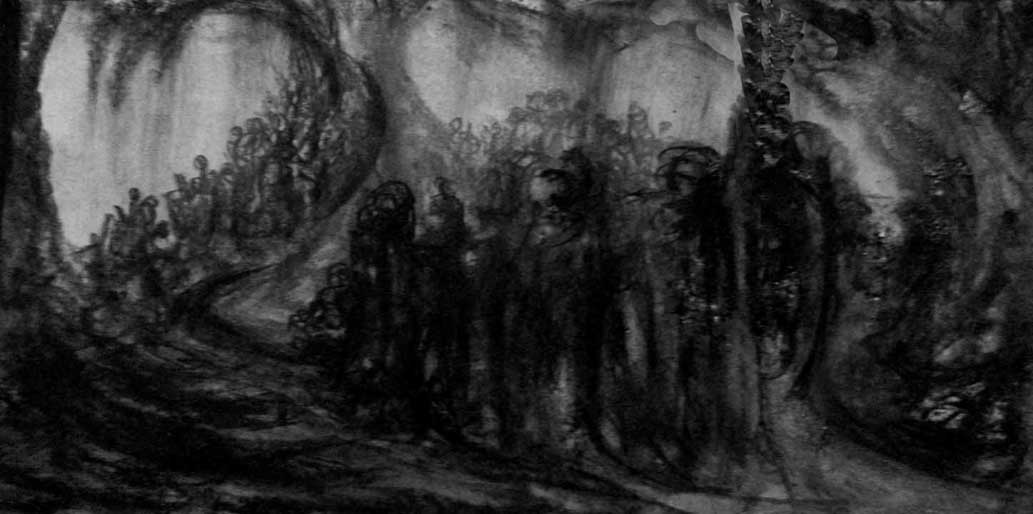
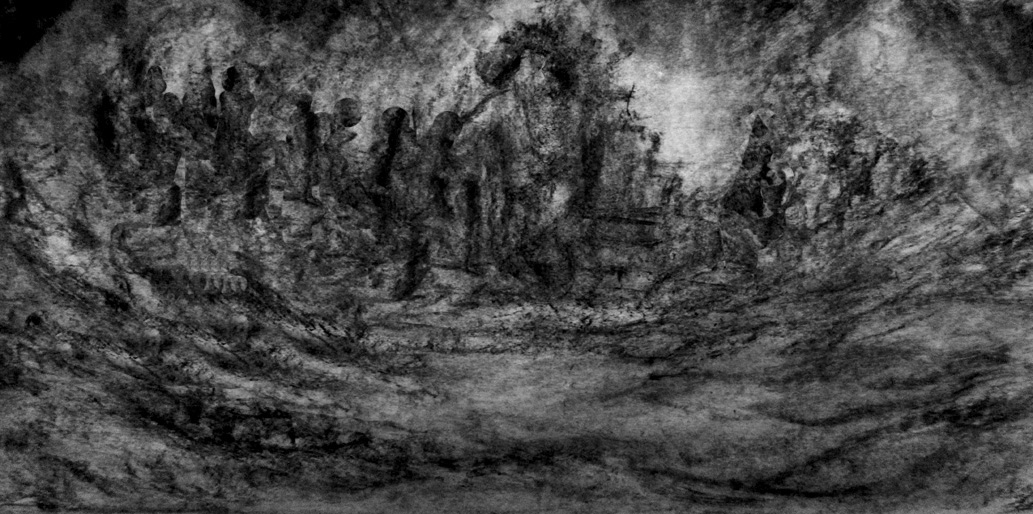
"Lord of the big city, whose shadow spreads in the West, who has come out of the Meslam, Bull whose great strength cannot be repulsed,in heaven I am a wild bull , in the netherworld I am a lion , in the land I am king, among the gods I am the fierce one, on the war path I am the standard"
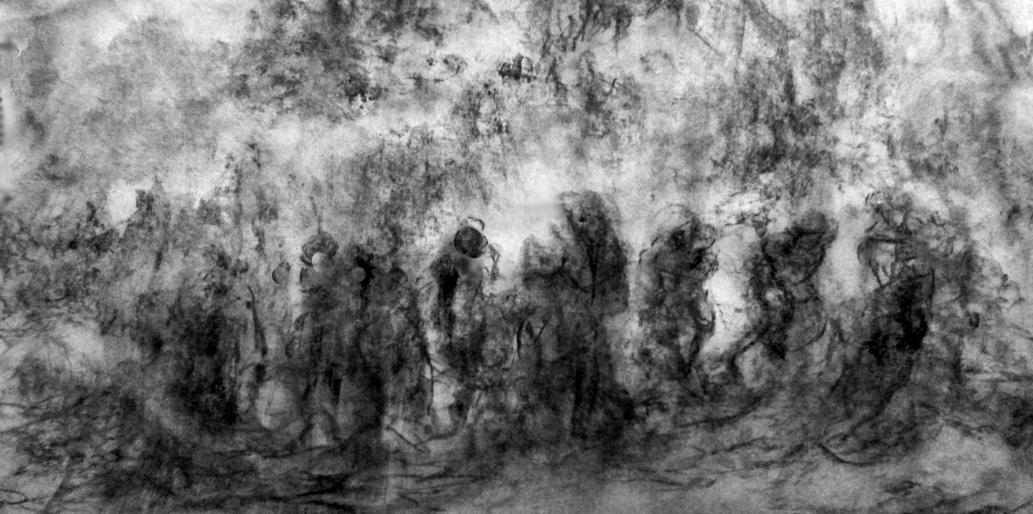
Ninsubur, the minister of the great place, the underworld, greeted Nergal: "You are the lord who has made the bandits come forth from the mountains. As with Enlil , no part of a foreign land escapes your grasp. Hero, for Enlil you piled up Enlil's enemies in a single day. Hating Nergal, as fire, you rise up in the lands where the sun rises.
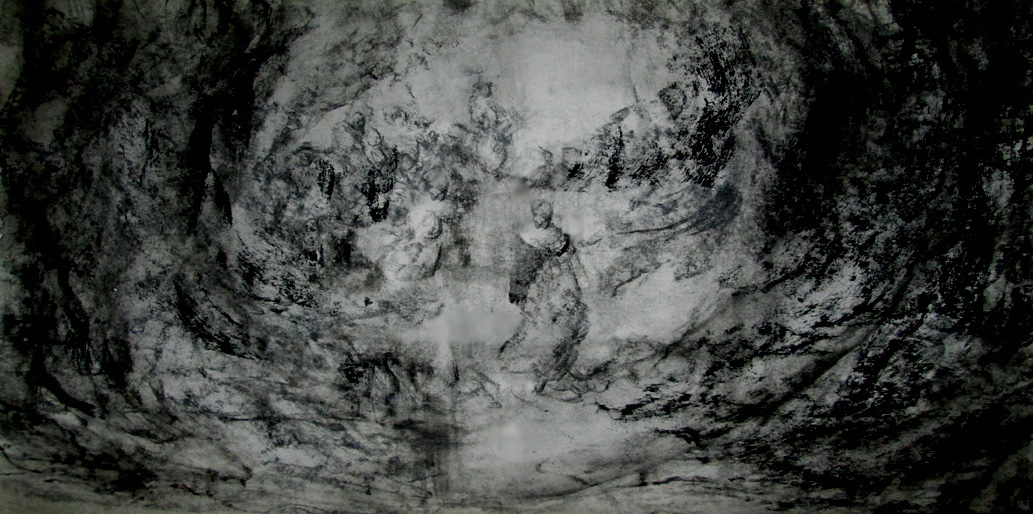
The Underworld then was quite a well ordered place, rituals were maintained, it was conceived of as a great City were all went were in a sense life continued as previously.
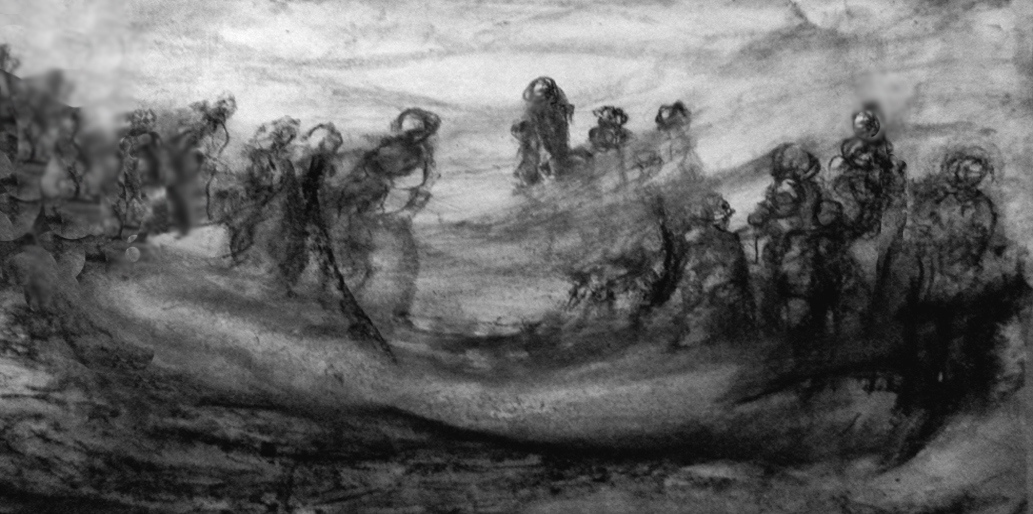
Eres-kigal: the "Queen of the big earth""when people lie down in the earth (they say) : 'Eres-kigal is our mother, we are her children'"
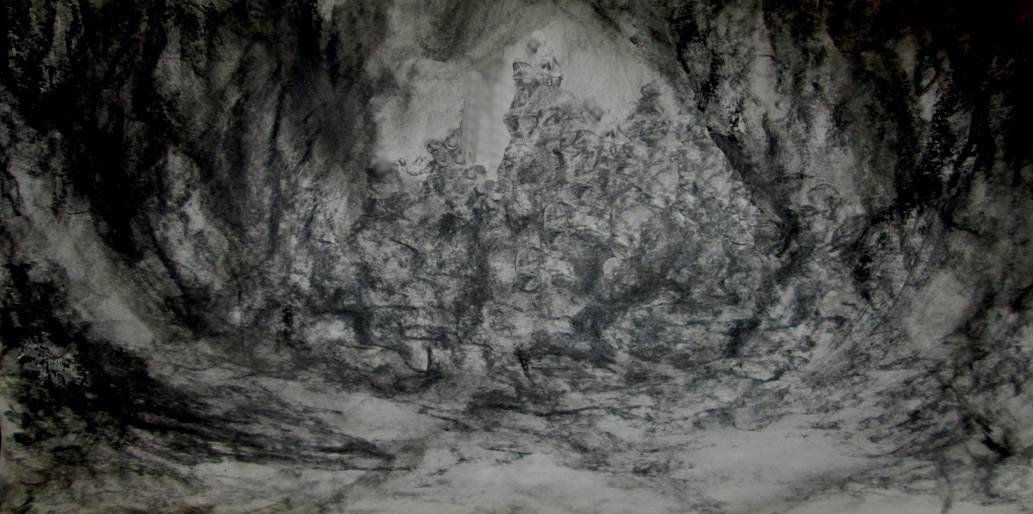
To the dark house, the abode of Irkalla,to the house which those who enter cannot leave,to the road which its course cannot be reversed, to the house in which those who enter yearn for light.
Where soil is their sustenance, clay their food,light they do not see, they dwell in darkness, clad like birds with a garment of feathers, over the door and the bolt, dust has spread
In the grave the gate is open for them, they leave toward the gate of sunset
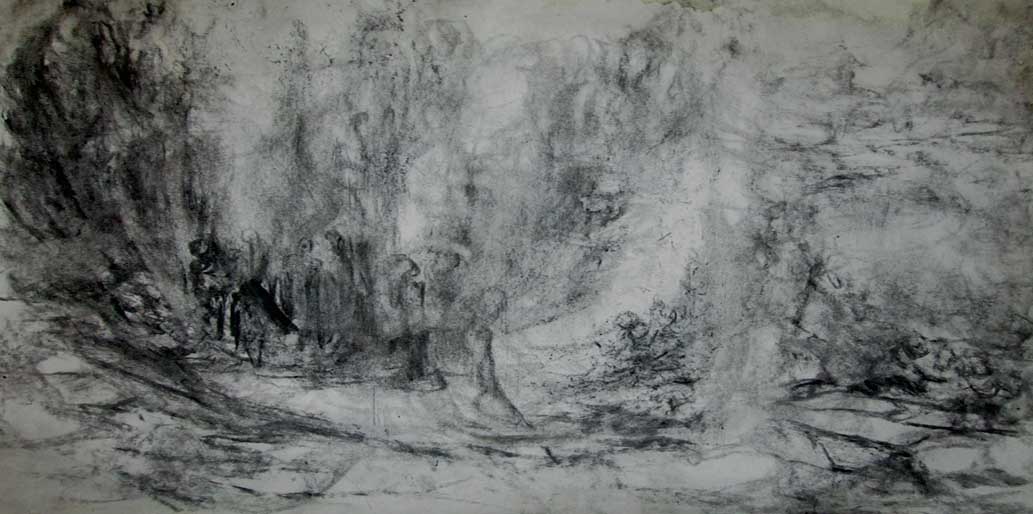
The Old Babylonian Atra-has tells that man was created from a mixture of clay with the flesh and blood of a god who was slaughtered for that purpose the ghost was created in order to form an everlasting reminder of the circumstances that led to the creation of man
“A god and a man shall be mixed together in the clay. (Thus,) for future days we may hear the drum a ghost shall be from the god’s flesh.. She (Nintu) shall announce ‘life’ as his (man’s) sign, and that this is not forgotten a ghost shall be
Spirit which leaves the body was realized as a wind, thus unseen and yet tangible. The formal rite to release of the spirit was crucial in order to gain admittance to the netherworld and join the community of dead spirits

In the epic Nergal and Eres-Kigal Anu sends his vizier Kakka (Pap-sukkal/Nin-Subur) down into the underworld to establish cordial relations, Eres-Kigal reciprocates by sending her vizier Namtar, the result being the visit if Nergal to the underworld and his becoming the husband of Eres-Kigal.
Anu made his voice heard and spoke, he addressed his words to Kakka,
"Kakka, I shall send you to Kur-nugi.
You must speak thus to Ereshkigal,
Saying, 'It is impossible for you to come up.
In your year you cannot come up to see us
And it is impossible for us to go down.
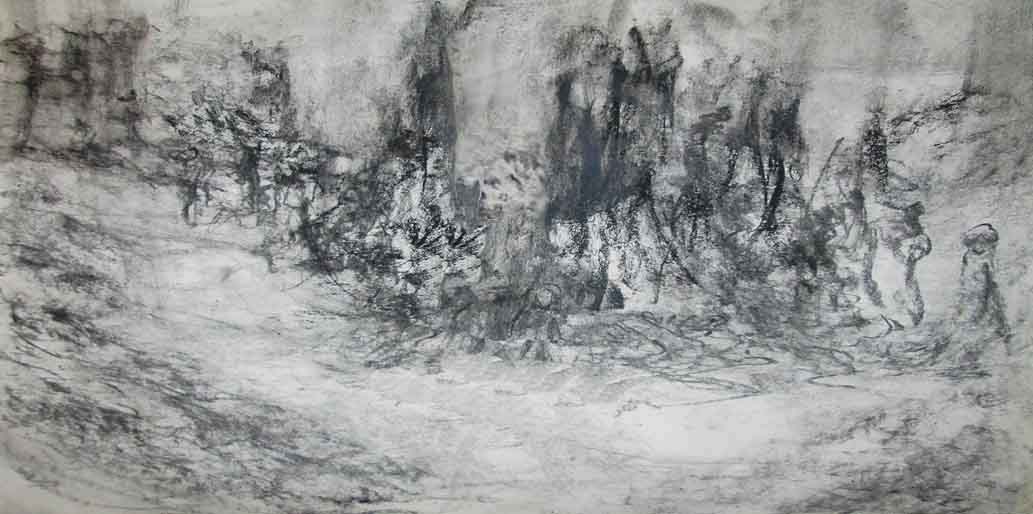
It is in this epic that Eres-kigal threatens to raise the dead if her desires are not complied with and Nergal does not return, which he does, in his own particular fashion.
According to the rites of Erkalla and the great Earth
I shall raise up the dead, and they will eat the living.
I shall make the dead outnumber the living!'"
He entered her wide courtyard,
And went up to her and laughed.
He seized her by her hairdo,
And pulled her from the throne.
He seized her by her tresses
The two embraced each other
And went passionately to bed.
Ishtar also was understood during the Old Babylonian period as having the capacity to raise the dead, to return them from the Underworld, thus the transition was not neccesarily a one way journey...
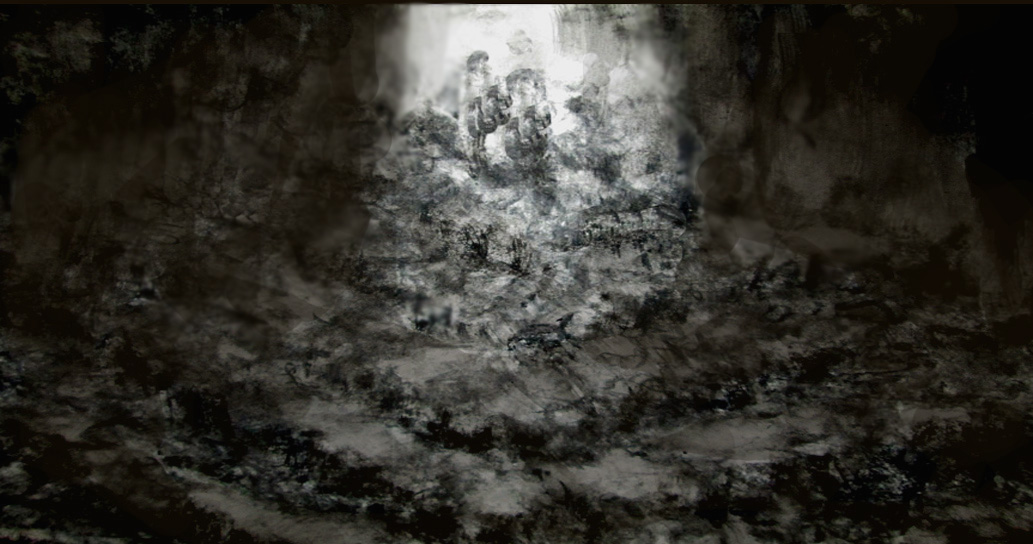
Nergal and Eres-Kigal
Death they dispensed to Mankind
The Sumerian underworld was conceived of as a dark and dusty place, were the immortal Divine spirit of an individual resided after death as a ghost, i want to set out some of the relevant texts here in consideration, i also provide my own personal interprative sketches in charcoal which i made over the past few gloomy weeks by way of illustration
Looking at Sumerian afterlife tradition the first thing to note is that there was at first a Northern Mesopotamian tradition were Nergal ruled the underworld, his cultic centre being the E-Meslam at the city of Kutha, and the Southern tradition were Eres-Kigal was Queen of the underworld within Irkalla, in the Old Babylonian period the two are married and the traditions merge.

Lord Nergal was given the underworld, the E-meslam by Enlil and Ninlil. They made him the great lord of the netherworld
To prolong the life of the black-headed people of Sumer where the divine powers are utterly cleansed, to fill their life with happiness, to make them reach an old age, to see that after their death they gather to the place where one is called by his personal god, to the netherworld, and to see that the precious and lasting cultic ordinances are performed befitting the netherworld

Nergal's responsibilities as a god of death are not limited to the enemy, but include all life, human as well as animal. He is the god of inflicted death in general , and he inflicts death by supporting the king's arms, but also by supernatural means, plague.
The peace Nergal guarantees recurs in his name Lugal-silimma' "The lord of peace" , The complementary char acter traits of the armed god are expressed by the names of his two dragons at the gate of the E-meslam, his temple in Kutha: War (Tabazum) and Peace (Tubbum)

"Lord of the big city, whose shadow spreads in the West, who has come out of the Meslam, Bull whose great strength cannot be repulsed,in heaven I am a wild bull , in the netherworld I am a lion , in the land I am king, among the gods I am the fierce one, on the war path I am the standard"
There appears to be a connection between Nergal and Shamash. It has indeed been argued that the Mesopotamians saw them as alter-egos , Nergal governing the underworld and Shamash the sky.

Ninsubur, the minister of the great place, the underworld, greeted Nergal: "You are the lord who has made the bandits come forth from the mountains. As with Enlil , no part of a foreign land escapes your grasp. Hero, for Enlil you piled up Enlil's enemies in a single day. Hating Nergal, as fire, you rise up in the lands where the sun rises.
Deposits of grave goods, particularly food, drink and personal belongings,demonstrate a belief that life continues beyond the grave, and therefore that humankind contains an immortal segment. Thus, death appears as atransitional phase, in which life is transformed from one mode to another.
Deemed actual, the land of the dead was described in the social, political and economical terms of the familiar contemporary terrestrial kingdom.

The Underworld then was quite a well ordered place, rituals were maintained, it was conceived of as a great City were all went were in a sense life continued as previously.
Abundant textual and archaeological evidence makes manifest that the ghost was nourished with food and drink provided by living kinsmen,signifying that it was held a corporal living entity. A figurine of the dead was made for the burial ritual, set on a chair and clad with a garment it received the offerings of food and drink.
Numerous incantations and rituals aiming to chase away restless spirits testify that hungered ghosts, neglected by their family, returned to the living and caused troubles, diseases and untimely death.

Eres-kigal: the "Queen of the big earth""when people lie down in the earth (they say) : 'Eres-kigal is our mother, we are her children'"
Nergal is concerned with the afterlife of the soul in the "big city", the chthonic Eres-kigal with the decay of the body in the "big earth". her type of death is submission to Fate
Namtar "Fate", the vizier of Eres-kigal ; Fate's wife Iusbisa "Its horror is good"

To the dark house, the abode of Irkalla,to the house which those who enter cannot leave,to the road which its course cannot be reversed, to the house in which those who enter yearn for light.
Where soil is their sustenance, clay their food,light they do not see, they dwell in darkness, clad like birds with a garment of feathers, over the door and the bolt, dust has spread
In the grave the gate is open for them, they leave toward the gate of sunset

The Old Babylonian Atra-has tells that man was created from a mixture of clay with the flesh and blood of a god who was slaughtered for that purpose the ghost was created in order to form an everlasting reminder of the circumstances that led to the creation of man
“A god and a man shall be mixed together in the clay. (Thus,) for future days we may hear the drum a ghost shall be from the god’s flesh.. She (Nintu) shall announce ‘life’ as his (man’s) sign, and that this is not forgotten a ghost shall be
Spirit which leaves the body was realized as a wind, thus unseen and yet tangible. The formal rite to release of the spirit was crucial in order to gain admittance to the netherworld and join the community of dead spirits

In the epic Nergal and Eres-Kigal Anu sends his vizier Kakka (Pap-sukkal/Nin-Subur) down into the underworld to establish cordial relations, Eres-Kigal reciprocates by sending her vizier Namtar, the result being the visit if Nergal to the underworld and his becoming the husband of Eres-Kigal.
Anu made his voice heard and spoke, he addressed his words to Kakka,
"Kakka, I shall send you to Kur-nugi.
You must speak thus to Ereshkigal,
Saying, 'It is impossible for you to come up.
In your year you cannot come up to see us
And it is impossible for us to go down.

It is in this epic that Eres-kigal threatens to raise the dead if her desires are not complied with and Nergal does not return, which he does, in his own particular fashion.
According to the rites of Erkalla and the great Earth
I shall raise up the dead, and they will eat the living.
I shall make the dead outnumber the living!'"
He entered her wide courtyard,
And went up to her and laughed.
He seized her by her hairdo,
And pulled her from the throne.
He seized her by her tresses
The two embraced each other
And went passionately to bed.
Ishtar also was understood during the Old Babylonian period as having the capacity to raise the dead, to return them from the Underworld, thus the transition was not neccesarily a one way journey...

Nergal and Eres-Kigal
Death they dispensed to Mankind
edit on Kpm1315vAmerica/ChicagoMonday0631 by Kantzveldt because: (no reason given)
reply to post by Kantzveldt
Fascinating read, thanks for sharing.
These are the kind of threads that made me become an ATS member.
Your sketches are beautiful too.
S&F
Fascinating read, thanks for sharing.
These are the kind of threads that made me become an ATS member.
Your sketches are beautiful too.
S&F
Sumer was and is a point of vast intrest for myself, it for me and a lot I know is the birthplace of all we know.
Oustanding charcoal drawings! You are very talented!
Thank you for composing this thread!
Oustanding charcoal drawings! You are very talented!
Thank you for composing this thread!
Who got smoke all over the underworld's ceiling? That is going to take forever to clean.
reply to post by Kantzveldt
I really enjoy your artwork. Very nice! Is this your typical medium or was it chosen specifically for these pieces. Obviously the perfect choice. Again, very nice.
I really enjoy your artwork. Very nice! Is this your typical medium or was it chosen specifically for these pieces. Obviously the perfect choice. Again, very nice.
reply to post by yamammasamonkey
Not something i normally use no, but as you say it suited the subject, as does my generally murky style..
reply to post by sulaw
Thanks, the general question this raised for me while studying and illustrating the subject was what was the point of retaining the spirits of the dead, if they are not to return, within the ever expanding underworld city...
reply to post by Rainbowresidue
Glad you enjoyed...and appreciated my sketches
Not something i normally use no, but as you say it suited the subject, as does my generally murky style..
reply to post by sulaw
Thanks, the general question this raised for me while studying and illustrating the subject was what was the point of retaining the spirits of the dead, if they are not to return, within the ever expanding underworld city...
reply to post by Rainbowresidue
Glad you enjoyed...and appreciated my sketches
edit on Kpm1315vAmerica/ChicagoMonday0631 by Kantzveldt because: (no reason given)
reply to post by Kantzveldt
I think you answered your own question here. It's an ever expanding underworld, if nothing ever truelly dies then the underworld city and those worlds after would be the next life one leads. Therein the God that represents the individual soul, so you never truelly "die" but go on in different forms.
Just a Metaphysical, Spiritual take on the Sumerian Lore of Legend that is
What was the point of retaining the spirits of the dead, if they are not to return, within the ever expanding underworld city...
I think you answered your own question here. It's an ever expanding underworld, if nothing ever truelly dies then the underworld city and those worlds after would be the next life one leads. Therein the God that represents the individual soul, so you never truelly "die" but go on in different forms.
Just a Metaphysical, Spiritual take on the Sumerian Lore of Legend that is
reply to post by sulaw
Then perhaps the dark gravitational forces that some detect and conjecture might be a parallel universe is simply the ever expanding great city of the dead, a far more expansive realm than that of the living...
Then perhaps the dark gravitational forces that some detect and conjecture might be a parallel universe is simply the ever expanding great city of the dead, a far more expansive realm than that of the living...
reply to post by Kantzveldt
Nicely stated! This could very well be the case! Could be another reason why we can't detect it but know its there, the same way mathematically we know parallel dimensions are possible just not proven.
I hope I said that right.
Nicely stated! This could very well be the case! Could be another reason why we can't detect it but know its there, the same way mathematically we know parallel dimensions are possible just not proven.
I hope I said that right.
I am curious Kantz is this the underworld the actual afterlife or was it more liken to Sheol, Limbo or Purgatory? It sounds not much different than
real life, what with the rituals still being performed, food and such. It also sounds more like a wait stations then an actual destination, but
perhaps I reading to much of my own theological ideals into it.
Was there a heaven or was that only reserved for the Gods? (I have no real knowledge of Sumerian Theology regarding this.)
As always I love to see your artwork as you know! Bravo!
Was there a heaven or was that only reserved for the Gods? (I have no real knowledge of Sumerian Theology regarding this.)
As always I love to see your artwork as you know! Bravo!
edit on 6-1-2014 by abeverage because: of the afterlife being too
boring...
reply to post by abeverage
Ostensibly this was it, an afterlife of little cheer, were nothing grew, a dark and dusty place were the only clothing, provisions and furnishings were those provided by the relatives of the deceased, hence the importance of grave goods.
All the ghosts would look forward to the death of a King because then a good spread would be laid on
The fact of the matter is though that the Divine spirit doesn't properly belong in the Underworld, as neither do the Deities associated with it's administration really, Eres-Kigal was a daughter of Anu, Nergal was seen as becoming bound there after his dalliance with her, Nin-subur tidied up the place on occasion, but the point is these are aspects of the Higher Celestial Deities, and not underworld Deities due to any intrinsic evil nature or rebellion, thus they're just there doing a job.
The restoration then of such Divine spirit to the upper realm of Earth and beyond remains a possibility.
reply to post by sulaw
In tripartite religious systems three realms are bound as one, the Underworld, Earthly realm, and the Celestial, naturally we only have awareness of our own realm.
Ostensibly this was it, an afterlife of little cheer, were nothing grew, a dark and dusty place were the only clothing, provisions and furnishings were those provided by the relatives of the deceased, hence the importance of grave goods.
All the ghosts would look forward to the death of a King because then a good spread would be laid on
The fact of the matter is though that the Divine spirit doesn't properly belong in the Underworld, as neither do the Deities associated with it's administration really, Eres-Kigal was a daughter of Anu, Nergal was seen as becoming bound there after his dalliance with her, Nin-subur tidied up the place on occasion, but the point is these are aspects of the Higher Celestial Deities, and not underworld Deities due to any intrinsic evil nature or rebellion, thus they're just there doing a job.
The restoration then of such Divine spirit to the upper realm of Earth and beyond remains a possibility.
reply to post by sulaw
In tripartite religious systems three realms are bound as one, the Underworld, Earthly realm, and the Celestial, naturally we only have awareness of our own realm.
edit on Kpm1315vAmerica/ChicagoMonday0631 by Kantzveldt because: (no reason given)
Wow! This would make a GREAT 'coffee table' book! You know; those big $$$ books that aspire to visually captivate and create conversation. Maybe on
the other side o' the pond they are called 'tea table' books?
Very evocative artwork, K! Thank you for making such a high-quality thread for us.
Very evocative artwork, K! Thank you for making such a high-quality thread for us.
The GUT
Wow! This would make a GREAT 'coffee table' book! You know; those big $$$ books that aspire to visually captivate and create conversation. Maybe on the other side o' the pond they are called 'tea table' books?
Very evocative artwork, K! Thank you for making such a high-quality thread for us.
Yes, YES! Agreed Gut! And I would like some biscuits for dippin too Kantz! YUMMERS!
(pushin my luck I know)
Leave it to someone called the The Gut to get me thinking about food in a dreary underworld!
edit on 6-1-2014 by abeverage because: of you all know why...
reply to post by The GUT
Thank you kindly, yes i know what you mean, i could make the Underworld fashionable and accessible for the atheistic chattering classes, something which has long been my ambition...
Thank you kindly, yes i know what you mean, i could make the Underworld fashionable and accessible for the atheistic chattering classes, something which has long been my ambition...
reply to post by Kantzveldt
Another amazing well presented thread related to the Sumer Ancients data Kantzveldt.
The way that you compiled the Northern related (LORD ENLIL) Son- Nergal (Meslamtaea) Underworld traditions and Southern related (LORD ENLIL) Granddaughter Eresh-kigal LILITHs mom & (INANNA/Ishtars sister) Netherworld traditions was well laid out for some to see how connected to the SPIRIT realm ANNUNAKI & HUMANITY truly may be or are. If willing to consider that is.
Denial and fear can cause rebellion or shut lenses, but the experiences in the Phases of Life and Death Within EXISTENCE may still continue even when lenses shut.
I have observed your writings on ATS over the periods Kantzveldt and do appreciate the time and effort you take to compile and share some of this Ancient Sumer data. Data/Information that today maybe or "is" relevant, especially with all the various EA*RTH symbols in association or connected to Firebirds-Phoenix winged ones symbols or Sky and the Sea Staff Neptune-Poseidon symbols...
If many take just a closer look to what is associate with their daily lives and what physically is in contact with them daily perhaps deeper consideration will be made of what is transmitted unconsciously Its all related...
www.halexandria.org...
1 hopes you keep up the great work Kantzveldt in sharing and thanks I learn and take a little more in from your reads. I haven't figured out The Language of Vampyr imagery as I still check the image from time to time but perhaps as of now 1z lenses focus is not polished enough to interpret.
NAMASTE*******
Another amazing well presented thread related to the Sumer Ancients data Kantzveldt.
The way that you compiled the Northern related (LORD ENLIL) Son- Nergal (Meslamtaea) Underworld traditions and Southern related (LORD ENLIL) Granddaughter Eresh-kigal LILITHs mom & (INANNA/Ishtars sister) Netherworld traditions was well laid out for some to see how connected to the SPIRIT realm ANNUNAKI & HUMANITY truly may be or are. If willing to consider that is.
Denial and fear can cause rebellion or shut lenses, but the experiences in the Phases of Life and Death Within EXISTENCE may still continue even when lenses shut.
I have observed your writings on ATS over the periods Kantzveldt and do appreciate the time and effort you take to compile and share some of this Ancient Sumer data. Data/Information that today maybe or "is" relevant, especially with all the various EA*RTH symbols in association or connected to Firebirds-Phoenix winged ones symbols or Sky and the Sea Staff Neptune-Poseidon symbols...
If many take just a closer look to what is associate with their daily lives and what physically is in contact with them daily perhaps deeper consideration will be made of what is transmitted unconsciously Its all related...
www.halexandria.org...
1 hopes you keep up the great work Kantzveldt in sharing and thanks I learn and take a little more in from your reads. I haven't figured out The Language of Vampyr imagery as I still check the image from time to time but perhaps as of now 1z lenses focus is not polished enough to interpret.
NAMASTE*******
Kantzveldt
reply to post by abeverage
Ostensibly this was it, an afterlife of little cheer, were nothing grew, a dark and dusty place were the only clothing, provisions and furnishings were those provided by the relatives of the deceased, hence the importance of grave goods.
All the ghosts would look forward to the death of a King because then a good spread would be laid on
The fact of the matter is though that the Divine spirit doesn't properly belong in the Underworld, as neither do the Deities associated with it's administration really, Eres-Kigal was a daughter of Anu, Nergal was seen as becoming bound there after his dalliance with her, Nin-subur tidied up the place on occasion, but the point is these are aspects of the Higher Celestial Deities, and not underworld Deities due to any intrinsic evil nature or rebellion, thus they're just there doing a job.
The restoration then of such Divine spirit to the upper realm of Earth and beyond remains a possibility.
Interesting that the one of the first civilizations has such a boring and dreary afterlife...perhaps it was because it was a secret once you got there as to what happens next...sorta like a surprise party. Once the room was full they moved on to the next level never thinking to let anyone know where they were going (so rude...)
Now then back to reality so there is nothing else about delights of a heaven, hall of warriors, places laden with hot virgins (wishful thinking) or other such contrived fantastical lands within the Sumer traditions?
Was there no need for a promised land or eternal blissfulness to keep the natives entranced? If there is not I would find that all most as fascinating!
reply to post by abeverage
There may be more information related to the Afterlife data, yes. This is from the perspective of what was able to be compiled and interpreted in today language. It could be that a form switch is made so from human form things look one way from another form things look another way. Souls taking on a new bodies that are still conscious but no longer human as you move to the next level. My subjective input on your post abeverage what of the cosmic or above the nether/underworlds data not interpreted yet also afterlife associated?
There may be more information related to the Afterlife data, yes. This is from the perspective of what was able to be compiled and interpreted in today language. It could be that a form switch is made so from human form things look one way from another form things look another way. Souls taking on a new bodies that are still conscious but no longer human as you move to the next level. My subjective input on your post abeverage what of the cosmic or above the nether/underworlds data not interpreted yet also afterlife associated?
reply to post by Ophiuchus 13
Thanks, i enjoy reading the specialist papers on Sumerian mythology and translated texts and a lot of it people aren't generally aware of and just know the somewhat facile popular blurb, so i try to make things more available and understandable to the general interest reader as well as those more deeply interested.
It was worth noting as you have that the quality of wind/spirit in the Underworld directly relates to the qualities of Enlil and Ninlil, that in his banishment there for bad behaviour toward Ninlil children from this High Celestial Deity were conceived in the underworld, such as Nergal and Ninurta, and also Nin-subur as i conjectured here, the exile thus a device for transfering those Higher traits into the nether regions.
reply to post by abeverage
Well i suppose it laid the emphasis on appreciating life and living a responsible one in order not to jeapordize that, but certainly there don't seem to have been any carrots dangled in terms of incentive to believe, everyone went to the same place regardless of status and behaviour in life.
Thanks, i enjoy reading the specialist papers on Sumerian mythology and translated texts and a lot of it people aren't generally aware of and just know the somewhat facile popular blurb, so i try to make things more available and understandable to the general interest reader as well as those more deeply interested.
It was worth noting as you have that the quality of wind/spirit in the Underworld directly relates to the qualities of Enlil and Ninlil, that in his banishment there for bad behaviour toward Ninlil children from this High Celestial Deity were conceived in the underworld, such as Nergal and Ninurta, and also Nin-subur as i conjectured here, the exile thus a device for transfering those Higher traits into the nether regions.
reply to post by abeverage
Well i suppose it laid the emphasis on appreciating life and living a responsible one in order not to jeapordize that, but certainly there don't seem to have been any carrots dangled in terms of incentive to believe, everyone went to the same place regardless of status and behaviour in life.
edit on Kpm1315vAmerica/ChicagoMonday0631 by Kantzveldt because: (no reason given)
Kantzveldt
Thanks, the general question this raised for me while studying and illustrating the subject was what was the point of retaining the spirits of the dead, if they are not to return, within the ever expanding underworld city...
Kantzveldt,
I think the answer to this question is too obvious to be immediately seen by someone overthinking it.
Just like today, people, loved ones, died.
Just like today, these unfortunates are not observed to have returned.
Just like today, humans were too vain or bereft to bear the idea that death is the utter end.
Also, nice thread and excellent OP.
Harte
Well, this is more like it. Glad you frequent this website and raise the ambiance. The atmosphere is ... gloovely (gloom and lovely).
I'll take the reality of ancient writings and dark art (literally too) over Sitchen's Sumerian interpretations any day, or night.
Astounding work with the illustrations ... as well as the thread in general presentation. I sit in frank admiration of your aesthetics. The images and words weave a spell more powerful than you may know.
Bravo.
Edit: And as for the ever expanding underworld... ancient ideations of a dark underworld where grey shades of the once vibrant stand in wan contemplation always gave me the chills. Not how I'd like to spend much of my personal eternity, thanks very much, though.
They hadn't the more modern concept of free floating consciousness (and self made physicality) getting most of the mystery answered while flying around the cosmos, exploring at breakneck speed, soaking up all creation has to offer... as experience vampires of a sort and then on to now incomprehensible states of awareness.
Nor did they have the more sober, studied guess (for that's all they are) that we flick out like wet candles. Just ending isn't so terrible either, as long as one got enough life, that is.
Either way, life, in all it's glory and horror, is to be wondered at while we can.
I'll take the reality of ancient writings and dark art (literally too) over Sitchen's Sumerian interpretations any day, or night.
Astounding work with the illustrations ... as well as the thread in general presentation. I sit in frank admiration of your aesthetics. The images and words weave a spell more powerful than you may know.
Bravo.
Edit: And as for the ever expanding underworld... ancient ideations of a dark underworld where grey shades of the once vibrant stand in wan contemplation always gave me the chills. Not how I'd like to spend much of my personal eternity, thanks very much, though.
They hadn't the more modern concept of free floating consciousness (and self made physicality) getting most of the mystery answered while flying around the cosmos, exploring at breakneck speed, soaking up all creation has to offer... as experience vampires of a sort and then on to now incomprehensible states of awareness.
Nor did they have the more sober, studied guess (for that's all they are) that we flick out like wet candles. Just ending isn't so terrible either, as long as one got enough life, that is.
Either way, life, in all it's glory and horror, is to be wondered at while we can.
edit on 1/6/2014 by Baddogma because: (no reason given)
edit on 1/6/2014 by Baddogma because: added meanderings
new topics
-
What Joe Rogan said Vs The View
Dissecting Disinformation: 2 hours ago -
Biden's "Reckless" Decision To Escalate Russia-Ukraine War
World War Three: 3 hours ago -
Inca stone masonry at Sacsayhuaman, Ollantaytambo and the Sun Temple
Ancient & Lost Civilizations: 11 hours ago
top topics
-
President-Elect TRUMP Picks Former Florida A.G. PAM BONDI to be U.S. Attorney General.
2024 Elections: 15 hours ago, 15 flags -
Biden's "Reckless" Decision To Escalate Russia-Ukraine War
World War Three: 3 hours ago, 14 flags -
Putin will warn civilians in targeted areas
World War Three: 17 hours ago, 11 flags -
A Mysterious Orb filmed over NYC by local news
Aliens and UFOs: 16 hours ago, 9 flags -
What Joe Rogan said Vs The View
Dissecting Disinformation: 2 hours ago, 8 flags -
Inca stone masonry at Sacsayhuaman, Ollantaytambo and the Sun Temple
Ancient & Lost Civilizations: 11 hours ago, 6 flags
active topics
-
Biden's "Reckless" Decision To Escalate Russia-Ukraine War
World War Three • 29 • : Freeborn -
Well we know Putins ICBMs won't fail in their silos
World War Three • 145 • : NoCorruptionAllowed -
What Joe Rogan said Vs The View
Dissecting Disinformation • 9 • : CriticalStinker -
Putin will warn civilians in targeted areas
World War Three • 38 • : Flyingclaydisk -
Inca stone masonry at Sacsayhuaman, Ollantaytambo and the Sun Temple
Ancient & Lost Civilizations • 6 • : Hansllune -
The Reactionary Conspiracy 13. The plot’s theology.
General Conspiracies • 308 • : Oldcarpy2 -
President-Elect TRUMP Picks Former Florida A.G. PAM BONDI to be U.S. Attorney General.
2024 Elections • 31 • : IndieA -
A Mysterious Orb filmed over NYC by local news
Aliens and UFOs • 15 • : Encia22 -
Well, here we go red lines crossed Biden gives the go ahead to use long range missiles
World War Three • 324 • : CarlLaFong -
Post A Funny (T&C Friendly) Pic Part IV: The LOL awakens!
General Chit Chat • 7811 • : underpass61
